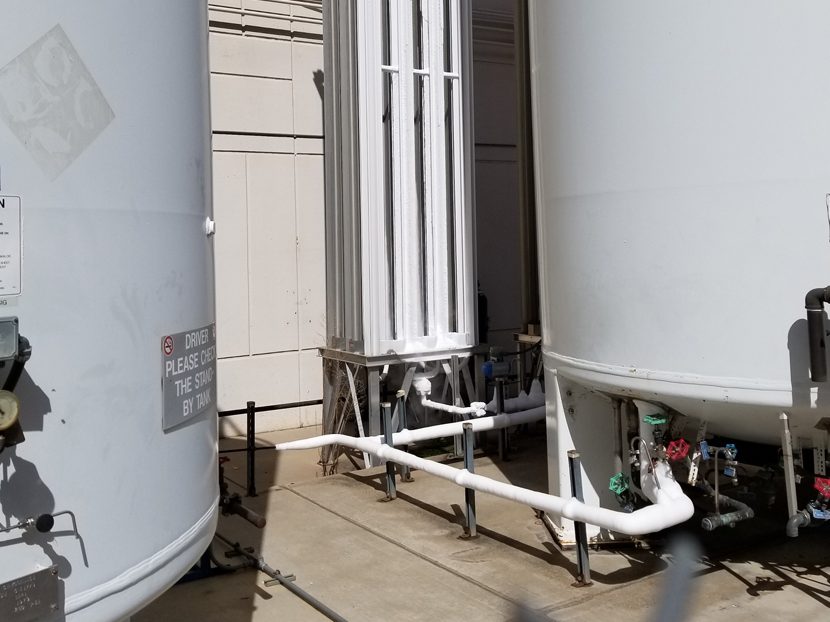Hospitals Vs. Make-Ready Hospitals, Part I
We have learned multiple do’s and don’ts of design processes and out-of-the-box thinking during this pandemic.

Many of you have seen or read about these make-ready hospitals. What are they and what do they look like?
Here are some new terms to be aware of:
1. FIO2: Functional Inspired Oxygen Percent, which is the concentration of oxygen in the gas used by the patient.
2. Arena to Health Care (A2HC), as defined by the U.S. Army Corps of Engineers (USACE):
- Proximity to existing, permanent medical hospital (10 mile/30 minutes).
- Readily available (10 mile/30 minutes) hazardous waste disposal, linen/laundry, pharmacy.
- Will not be fully ADA-compliant; only to the extent of the existing facility.
- Facility templates and standards are adapted from Defense Department UFC criteria.
- Local municipality/county/state standards should be discussed and agreed upon by the municipality and the construction agent.
- State- or city-owned property preferred eases leasing and permitting.
- Already has redundant power or emergency power.
- Building is provided with fire sprinklers and alarms.
- Temporary facilities will be staged on the perimeter; includes medical waste, sanitary, soiled linen, hand washing, med supply/pharmacy.
- Meet modern power three-phase, three-wire — temp power supplemented to patient care areas on the floor.
3. Hotel to Health Care (H2HC), as defined by the USACE:
- Proximity to existing, permanent medical hospital (10 mile/30 minutes).
- Readily available (10 mile/30 minutes) hazardous waste disposal, linen/laundry, pharmacy.
- Will not be fully ADA-compliant; only to the extent of the existing facility.
- Facility templates and standards are adapted from Defense Department UFC criteria.
- Local municipality/county/state standards should be discussed and agreed upon by the municipality and the construction agent.
- State- or city-owned property preferred eases leasing and permitting.
- Built or renovated after 1990 to mitigate lead paint/asbestos.
- Already has redundant power or emergency power.
- Building is provided with fire sprinklers and alarms.
- Should be a single room with an attached bathroom.
- Meet modern power three-phase, three-wire.
- Utilize exterior wall to install exhaust if needed.
3. Closed Hospital to Health-Care Concept (CH2HC), as defined by the USAC; similar to the A2HC and H2HC requirements. Additional mandatory requirements:
- Asbestos/mold/lead-free.
- One room/one bathroom.
- Air conditioning.
- Ventilation.
- Elevator size.
- Nurse call.
- Phones.
- Robust IP infrastructure.
4. Covid Positive:
- Acute: Airborne infectious, on a ventilator.
- Non-acute: Airborne infectious, not on a ventilator, may require supplemental oxygen (nasal cannula).
5. Non-Covid:
- Non-acute: Not airborne infectious.
- Acute: Not airborne infectious; may require medical support spaces not in an alternate-care facility (ACF).
- Critical: Intense medical needs beyond an NFPA 99 Category 2 Plus. Multiple comorbidities are defined as the “co-occurrence of multiple chronic or acute diseases and medical conditions within one person.”
You can read more about these make-ready hospitals created to help during the COVID-19 pandemic at https://bit.ly/2WaoAkS.
As the pandemic spreads, we have learned multiple do’s and don’ts of design processes and out-of-the-box thinking.
From a plumbing standpoint, there are minimal plumbing requirements and or modifications to provide.
Most, if not all, the selected sites above will have functioning plumbing and utilities already on site. Others will utilize bedside toilets, where staff will discard the waste.
Medical gas requirements depend on the level of the make-ready facility. A non-covid structure might consist of either E cylinders or H cylinders for oxygen and or medical air. A COVID-19 facility for the more serious make-ready structures may include a medical air skid and a mini-bulk oxygen system with a vaporizer. Piped medical gas could be installed using corrugated medical gas tubing and standard medical gas copper tubing.
Typically, the more serious the case of the COVID-19 coronavirus, the more likely that the patient will be transported to a local hospital that is better equipped to handle the more severe patients.
Existing Hospitals
The existing hospitals housing the acute COVID-19 patients will see an increase in oxygen and medical air usage. Some facilities have been installing splitters on the oxygen and medical air outlets, going from a private room to a semi-private room. This may work for non-acute covid patients but not recommended for the acute (many agree this is not a good idea placing such a high flow rate on a 3/8-inch pigtail outlet).
For those more acute covid patients, select states have asked health-care facilities to increase their bed counts by 50 percent. Most of the existing hospitals cannot increase the demand on their medical air compressors and bulk oxygen tank farms by 50 percent, but they do have capabilities to handle more acute COVID-19 patients. How?
What this might look like for a Level 1 Trauma 450-bed facility:
Each facility is different with how they handle certain patients and crises. With that in mind, one of the first places you will start asking questions is to the respiratory therapy director. You need to understand how many ventilators they have operating at one time in areas of the facility.
For this facility, you will need to know the following factors:
- How many ventilators the facility intends to go up to;
- Flow rate (or tidal volume) for those vented patients;
- Capacities of your bulk oxygen tank and your reserve tank (including the vaporizers); and
- The medical air compressor or compressors capacities and, of course, your pipe sizes.
The respiratory director has provided the following:
- On a typical day, the respiratory department will have 40 vented patients at one time.
- The facility has experienced upwards of 71 vented patients at one time earlier this year and had not experienced any disruption with their source equipment.
- They will use 40 lpm on their Covid patients.
- They do not want to go below 50 psi at the furthest outlet.
- There will be no high flow vents.
- There will be nasal cannula and CPAP.
The facility has also provided additional information as follows:
- Biomed has indicated the ventilators they use can go down to 41 psi before any alarms on the ventilator will go off.
- They have canceled all elective surgeries.
- The bed census has gone down and wings closed.
Below are several respiratory therapies which may be implemented regularly:
- Nasal cannula, 8 lpm;
- Reservoir masks 15 lpm;
- Standard invasive vent, 12 lpm;
- Hiflow vents (noninvasive), 50 lpm (Covid patient not likely to use);
- High-frequency oscillating vent, 80 lpm; and
- CPAP hoods, 50 to 120 lpm.
Respiratory will tell you 40 lpm, so what does this mean to me? It lets you know that you could have 40 lpm of oxygen flowing at one time. This flow of 100 percent oxygen at 40 lpm does not last more than 10 to 15 minutes. This is the time frame for the ventilator to adjust to the patient’s needs.
When the unit has been calibrated to the patient, the ventilator could use 50 percent oxygen. The patient’s tidal volume will be your operating flow rate, so you know how many vents can be on a zone at one time. You will be able to bring more vents online as the zone is calibrated, which we will discuss in Part II of this article.
This facility’s oxygen usage in January was 3,007,500 scf (26,130 gallons) and March was 3,340,900 scf (29,026 gals). The daily usage in January was 105,000 scf per day and March was 107,771 scf per day. Keep in mind, over those three months, the census has gone down and elective surgeries have gone down.
This facility has two 100 scfm-capacity skids currently installed, with a fourth pump ready to be installed on one of the triplex skids, making it a quadraplex. A bypass valve interconnects the two skids.
If you are thinking about opening the bypass valve and let it all work together, you would be incorrect in this approach. To make this happen, you will need to adjust the settings at each skid to function as one big skid. You want to operate all seven pumps in rotation; you do not want to burn up any of the pumps. You will need to work with your source equipment manufacturer to make these adjustments.
If we could not bypass and open the system up to another set of skids, we would have had to evaluate each system and what it serves on its own. We still recommend doing this process to determine the capacity of each system and how many ventilators the system can handle.
The tricky part is, does the facility have a decent set of as-built plans of the medical gas system? This will assist you in determining what an area or a riser can handle. Many facilities do not have a very good set of as-builts. I recommend these facilities start locating and updating their as-built drawings for future events.
The second part of this series will cover the sizing and evaluating criteria for existing piped systems, including various bulk or manifolded systems.





